Wolf (Canis lupus)
“Wolves are apex predators that travel in packs and are essential for the health of most ecosystems“
Wolf Scientific Classification:
- Kingdom: Animalia
- Phylum: Chordata
- Class: Mammalia
- Order: Carnivora
- Family: Canidae
- Genus: Canis
- Scientific Name: Canis lupus
Wolf Conservation Status:
- Status: Near Threatened
Wolf Locations:
- Geographical Range: Africa, Asia, Central America, Eurasia, Europe, North America, South America
Wolves, scientifically classified as Canis lupus, are large carnivorous mammals belonging to the Canidae family. They inhabit a wide range of habitats across continents, including Africa, Asia, Central America, Eurasia, Europe, North America, and South America. Despite their once widespread distribution, they are now listed as Near Threatened due to habitat loss, human-wildlife conflict, and other factors impacting their populations.
Wolf Facts:
Main Prey:
- Deer, Elk, Moose
Fun Fact:
- Wolves are apex predators that travel in packs and are essential for the health of most ecosystems.
Habitat:
- Grass plains and woodland
Predators:
- Human
Diet:
- Carnivore
Average Litter Size:
- 4
Lifestyle:
- Pack
Favorite Food:
- Deer
Type:
- Mammal
Slogan:
- Thought to date back more than 300,000 years!
Wolf Physical Characteristics:
Color:
- Brown
- Grey
- Black
- White
Skin Type:
- Fur
Top Speed:
- 46 mph
Lifespan:
- 10-12 years
Weight:
- 80-150 lbs
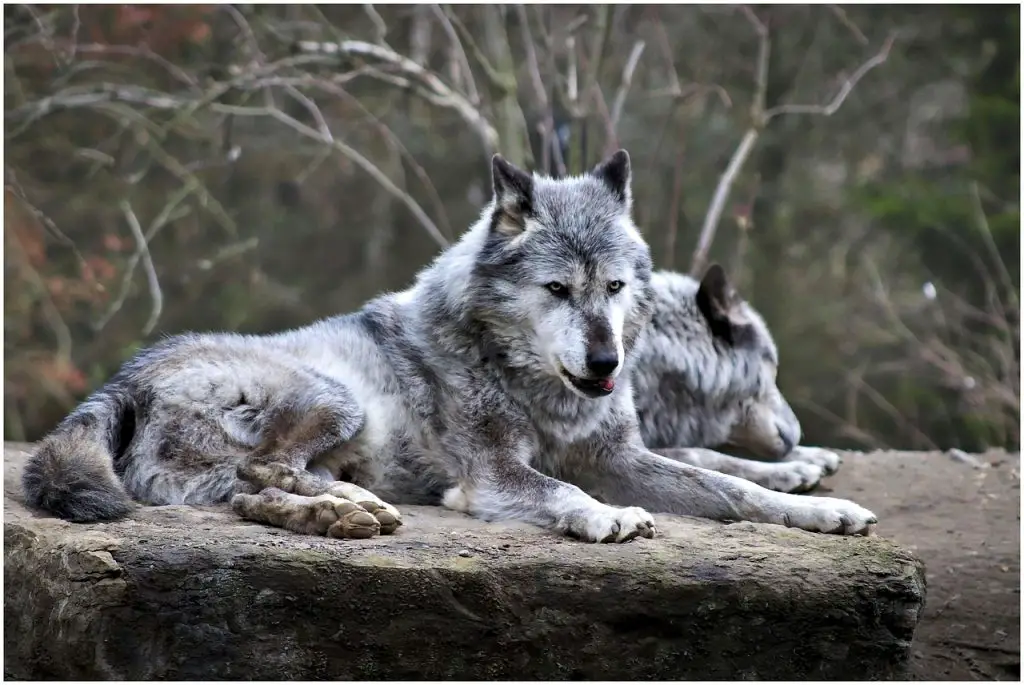
Wolves, as apex predators, play a vital role in maintaining the balance of ecosystems. Their pack structure, hunting prowess, and adaptability have allowed them to thrive in various habitats across the globe. With their keen intelligence and social behaviors, wolves continue to fascinate and inspire awe in humans, while also facing conservation challenges due to human-wildlife conflicts and habitat loss.
Wolves, particularly the gray wolf or timber wolf, stand as iconic symbols of the natural world, deeply ingrained in human culture through songs, legends, and contemporary media. However, beyond their cultural significance, wolves hold a vital ecological role as apex predators. While the gray wolf is the most well-known, there are over 30 distinct subspecies found across the northern hemisphere.
These magnificent creatures exhibit remarkable social behaviors, forming tightly-knit packs where cooperation and teamwork are essential for survival. Through coordinated hunting, roaming, and playful interactions, wolves strengthen the bonds within their packs while fulfilling crucial roles in their ecosystems. As apex predators, they help regulate prey populations, prevent overgrazing, and maintain the balance of delicate ecological systems.
Despite their resilience and adaptability, wolves face numerous challenges, including habitat loss, human-wildlife conflict, and misconceptions leading to persecution. Recognizing the importance of wolves in maintaining healthy ecosystems is key to ensuring their conservation and continued coexistence with humans.
Incredible Wolf Facts:
An Incredible Animal: 4 Wolf Facts
Dog Descendants:
- Dogs, scientifically known as Canis lupus familiaris, are descendants of wolves. This classification means that all dogs are essentially a type of wolf. Both dogs and wolves belong to the largest canine species in existence.
Mouth Full of Teeth:
- Wolves possess an impressive set of teeth, with the average wolf having a total of 42 teeth in its mouth. Their teeth can grow up to 2.5 inches in length, aiding in their carnivorous diet and hunting prowess.
Quick Sprints:
- While wolves typically travel at a moderate pace of around 5 miles per hour when roaming in packs, they are capable of remarkable bursts of speed when needed. When a wolf wants to run, it can sprint as fast as 38 miles per hour, showcasing their agility and athleticism.
Long-Term Relationships:
- Many wolf species exhibit monogamous mating behavior, forming long-term relationships with their mates. These pairs often mate for life, displaying a strong bond and cooperative partnership in raising their offspring.
Wolves, with their fascinating evolutionary history, impressive physical attributes, and complex social behaviors, stand as one of the most remarkable and iconic animals in the natural world.
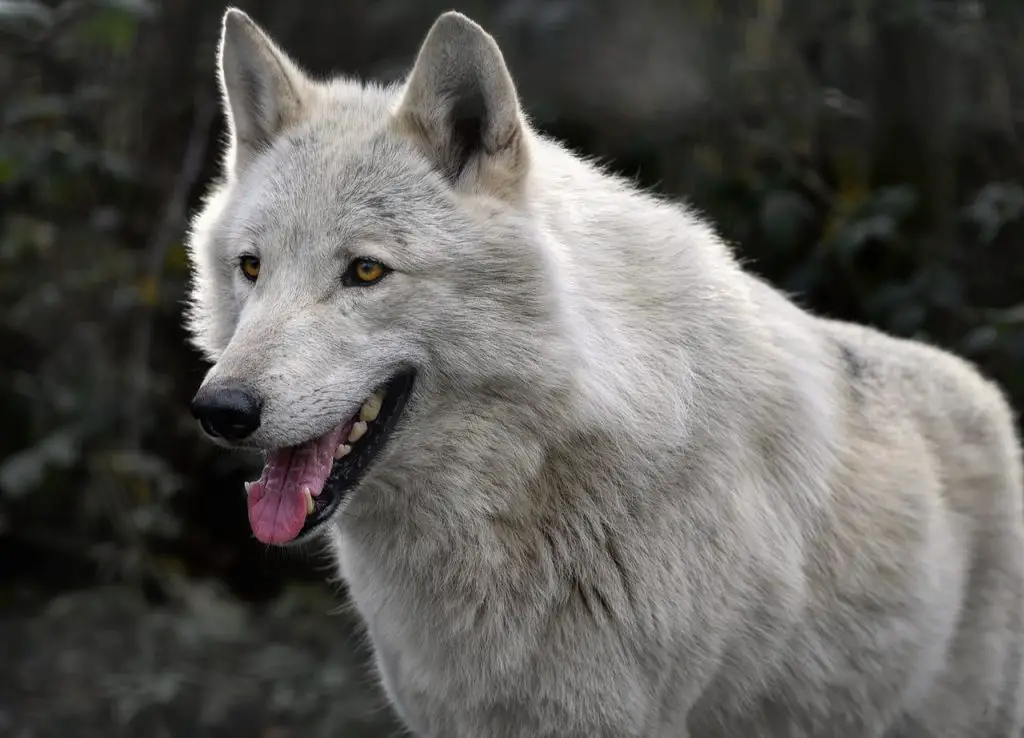
Scientific Name
Indeed, the scientific name for wolves, Canis lupus, holds a fascinating linguistic insight. “Lupus” is the Latin word for “wolf,” while “canis” translates to “dog.” This naming convention underscores the close evolutionary relationship between wolves and domesticated dogs. Both wolves and domestic dogs belong to the Canidae family, which encompasses a diverse array of carnivorous species, including coyotes, foxes, and jackals. This shared lineage highlights the deep connection between these magnificent animals and underscores their importance in the broader context of the animal kingdom.
Subspecies
The diversity of wolves extends beyond their scientific name, Canis lupus, with numerous subspecies exhibiting unique characteristics and inhabiting diverse habitats around the world:
Canis lupus lupus:
- Eurasian Wolf: Common in Europe and Asia, recognizable by the rusty sheen on their slate-gray fur.
Canis lupus albus:
- Tundra Wolf: Found throughout Russia and northern Europe, particularly large with fluffy, light-colored fur.
Canis lupus rufus:
- Red Wolf: Once ranged across the eastern half of the United States, now primarily found in North Carolina.
Canis lupus occidentalis:
- Northwestern Wolf: Iconically large, light-gray subspecies inhabiting Arctic tundras in Alaska, British Columbia, and the northwest territories.
Canis lupus arabs:
- Arabian Wolf: Found throughout the Arabian Peninsula, one of the smallest types of wolf.
Canis lupus campestris:
- Steppe Wolf: Average-sized wolf found in Kazakhstan and northern Ukraine, playing a crucial role in the region’s ecosystem.
Canis lupus chanco:
- Himalayan or Tibetan Wolf: Inhabits the Indian subcontinent and the Himalayas, known to cause issues for local ranchers by preying on yak and sheep.
Canis lupus arctos:
- Arctic Wolf: Beautiful white wolf found in the northernmost regions of Canada, preying on Arctic hares, muskoxen, caribou, and Arctic foxes.
Canis lupus lycaon:
- Gray Wolf (Eastern or Timber Wolf): Previously found throughout North America, currently existing only in Quebec and Ontario, Canada.
Other notable subspecies include the Mongolian wolf, New Guinea Singing Dog (dingo), Indian wolf, Mexican wolf, British Columbian wolf, Vancouver Island wolf, and many more, each contributing to the rich tapestry of wolf diversity across the globe.
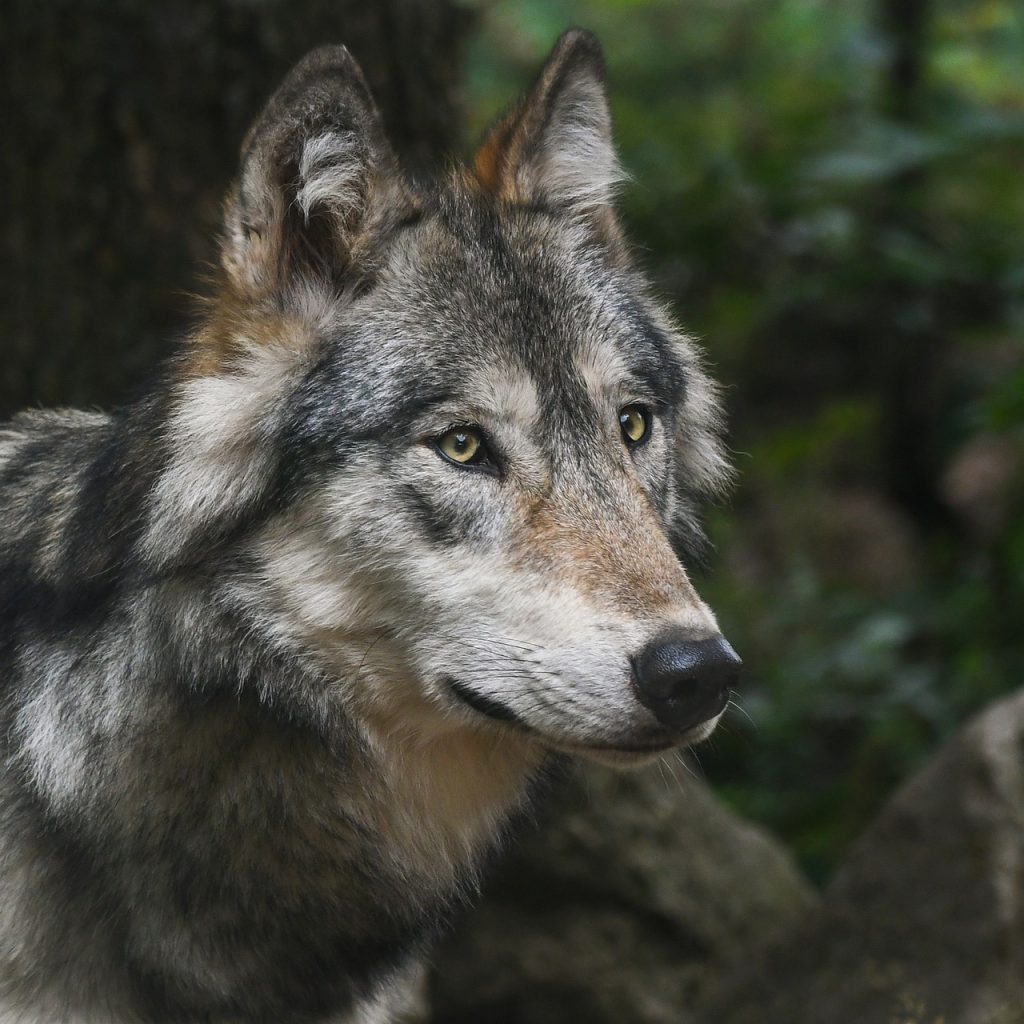
Evolution
The evolution of wolves is a topic of some debate, but it’s generally believed that they originated from a group of small, early canids during the Pliocene epoch, along the same lineage that also led to the coyote. Wolves and coyotes diverged from their common ancestor about 1.5 million years ago, while jackals and other members of the genus Canis had already branched off earlier.
About 20 million years ago, canines and felines split into separate families. The first gray wolf, Canis lupus, likely appeared in Eurasia around one million years ago during the Pleistocene epoch, and it’s believed that wolves migrated to North America around 750,000 years ago.
The Dire Wolf, Canis dirus, evolved earlier and coexisted with the gray wolf in North America for approximately 400,000 years. However, climate changes around 16,000 years ago led to the extinction of their prey, ultimately causing the Dire Wolf to become extinct as well.
Appearance & Behavior
Wolves are large, four-legged carnivores known for their pointed ears, elongated snouts, and bushy tails, which they use to express themselves. While there are many different subspecies with unique coloring, most wolves have thick, rough fur that is typically gray or beige, helping them blend into their surroundings.
Wolves are social creatures that live and travel in packs, usually consisting of 4 to 8 adults.
On average, wolves weigh between 80 and 160 pounds, with females often being up to 40 pounds lighter than males. They typically measure 4 to 6 feet in length and stand about 2 to 3 feet tall. One of the largest wolves ever recorded was killed in Alaska in 1975 and weighed a hefty 175 pounds.
Living and hunting in packs, wolves are highly social. While most packs have 4 to 8 adults, some can be as large as 30, particularly in certain parts of Alaska. These packs maintain territories ranging from 25 to 100 miles across, usually being the dominant carnivores within their territory.
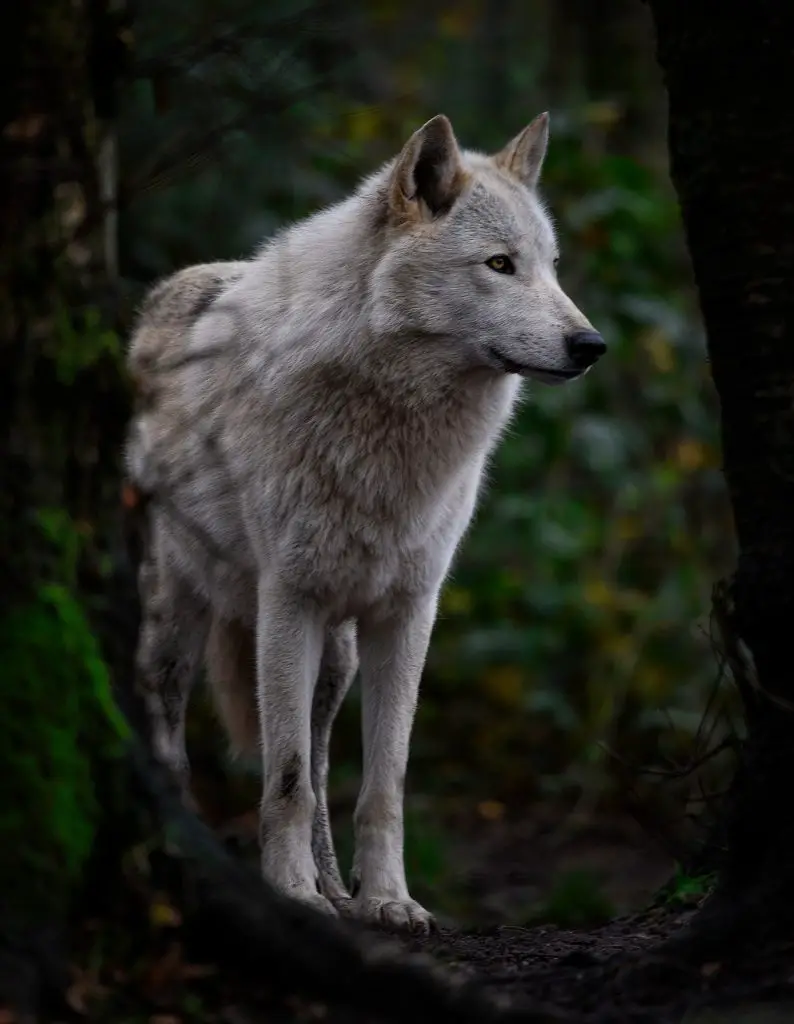
Habitat: An Animal in Need of Space
Wolves are native to the northern hemisphere and can be found across Europe, Asia, and North America. They prefer habitats with plenty of game, cover, and space to roam, but they’re not limited to any one type of terrain. You’ll find wolves in arctic tundras, mountains, forests, plains, and nearly every other northern environment. Due to their large size and thick fur, wolves favor cold climates, so they are rarely seen in the southern regions of their continents.
Most of the time, wolves are on the move within their territory, searching for prey. When they’re not hunting, they can be found scouting for threats or resting in caves, clearings, or other makeshift dens. Unlike some animals that have a fixed home, most wolves sleep in different parts of their territory each night.
Diet: A Carnivorous Animal
Wolves are carnivores and will eat almost any prey they can catch. They typically hunt large hoofed mammals such as deer, elk, moose, sheep, goats, and bison. When large prey isn’t available, they turn to smaller mammals like rabbits and beavers.
An adult wolf needs about 5-7 pounds of meat each day to stay healthy. A pack usually kills a large mammal and feeds on it for several days before seeking their next meal. On average, a wolf consumes the equivalent of 15 deer over a year, which is why packs need large territories to sustain themselves.
Predators and Threats: Animals at the Top of the Food Chain
Wolves are apex predators, meaning they are at the top of the food chain in their territories. However, they stay in packs for a reason; larger and fiercer animals, such as bears and big cats like tigers or mountain lions, can pose a threat. While a pack of wolves can take down a polar bear, a lone wolf might not fare as well.
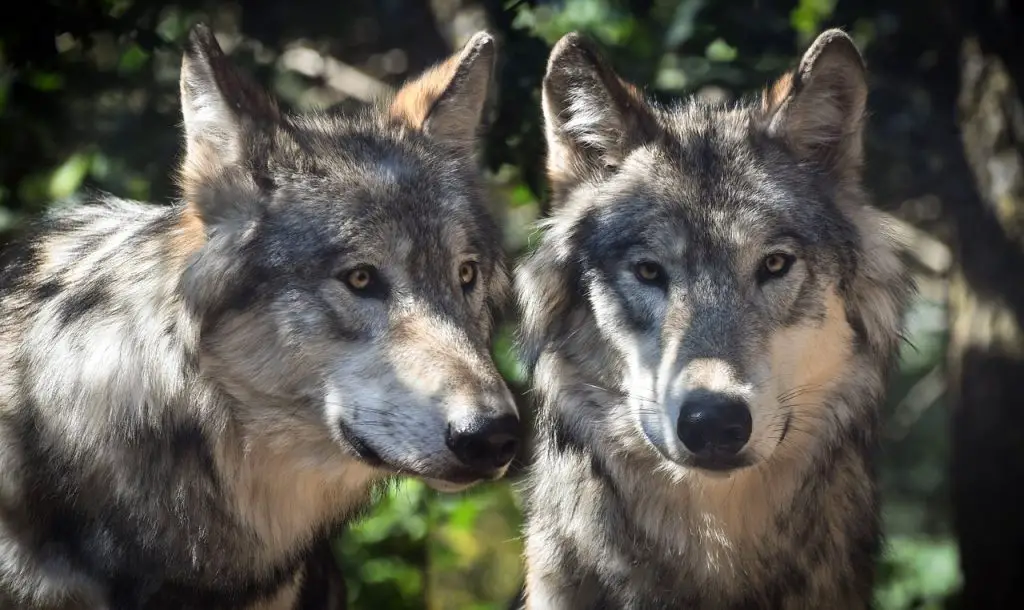
The biggest threat to wolves is human interaction. They are frequently shot by poachers, licensed hunters, and farmers protecting their livestock. Wolves also suffer from the effects of climate change and deforestation, which shrink their territories and reduce their prey options, making survival difficult. Human encroachment is a major reason for the drastic decline in the wolf population across North America over the past century.
Reproduction, Babies, and Lifespan: The Dominant Animals Breed
Every wolf pack has a dominant male and a dominant female. In smaller packs, these two are usually the only ones to breed. In larger packs, other females might also have young. Wolves have a gestation period of about three months and typically give birth to litters of 4-6 pups in early spring, ensuring the pups are born during the warmest part of the year.
Pups are born with their eyes closed and stunted noses, weighing less than 1-2 pounds. They grow quickly, gaining up to 3 pounds a week during the summer. Within two weeks, they open their eyes and start walking.
After surviving their first year, young wolves begin hunting with the pack. However, survival rates are low, with only one or two pups from each litter typically making it. If more pups survive, they often disperse to find new territories rich in game. Wolves generally reach full size by around two years old, provided they have adequate nutrition.
In the wild, wolves live about 4-8 years on average. In captivity, they can live up to 15 years or more. The oldest wolf ever recorded was named Madadh, who lived to be 19 years old with the help of her caretakers. As wolves age, they may face joint problems, injuries from fights, and the effects of famine.
Population: A Large Number of Animals
The current global wolf population is approximately 300,000. About 16,000 of these wolves live in the United States, with the majority in Alaska and around 5,000 in the contiguous states. Canada is home to over 60,000 wolves, and the remaining population is spread across the northern parts of Europe and Asia.
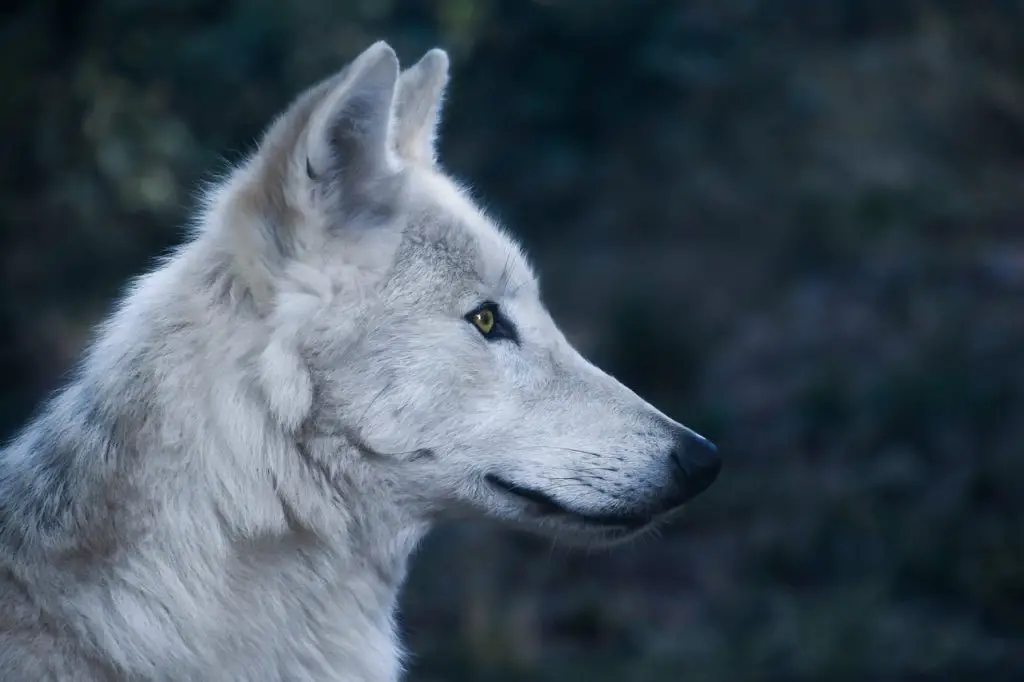
After a significant decline in numbers at the end of the 20th century, conservationists are pleased to report that wolf populations have remained stable over the past decade. Wolves, particularly gray wolves, are currently classified as “least concern.” However, some species, such as the red wolf, are still critically endangered.
Animals in the Zoo: Where to Find the Wolf
Wolves are a popular exhibit in zoos across the United States and around the world. You can find wolf packs at places like the San Diego Zoo, the Smithsonian’s National Zoo, and many local city zoos. If you want to see the endangered red wolf in person, visit the Lincoln Park Zoo in Chicago.
Before You Go…
Wolves are fascinating and resilient creatures that play a crucial role in their ecosystems. As apex predators, they help maintain the balance of animal populations and contribute to the health of their habitats. Despite past declines due to human activity, conservation efforts have stabilized many wolf populations. With ongoing protection and awareness, wolves continue to thrive in various regions, captivating the hearts of people worldwide through both their wild presence and their representation in zoos.




